This is the 42nd in a series of posts on the Hasselblad X2D 100C camera and the XCD lenses. You will be able to find all the posts in this series by looking at the righthand column on this page and finding the Category “X2D”.
If you’ve read this set of posts, then you’ll know what UniWB is and how to use it. If you haven’t read those posts, the Cliff Notes on UniWB is that it’s a was to get the histogram in your camera to more closely match the raw histogram than would otherwise be the case.
Using UniWB means working with a greenish EVF image, and many people don’t like to do it for that reason. With the X2D, it’s easy to program in a preset white balance, and switch back and forth between that and the other WB settings. The camera remembers the setting you programmed in, so it’s pretty simple to switch to manual WB, check the histogram, and then switch the WB back to something that gives more natural-looking colors. The big issue with the X2D is that it doesn’t have a live histogram, so in order to check the exposure, you have to switch to manual WB, take a shot, look at the review histogram, switch back to taking mode, switch the WB to something that gives you decent looking colors, and take the picture.
I’m sure hoping the next firmware release for the X2D has live histograms.
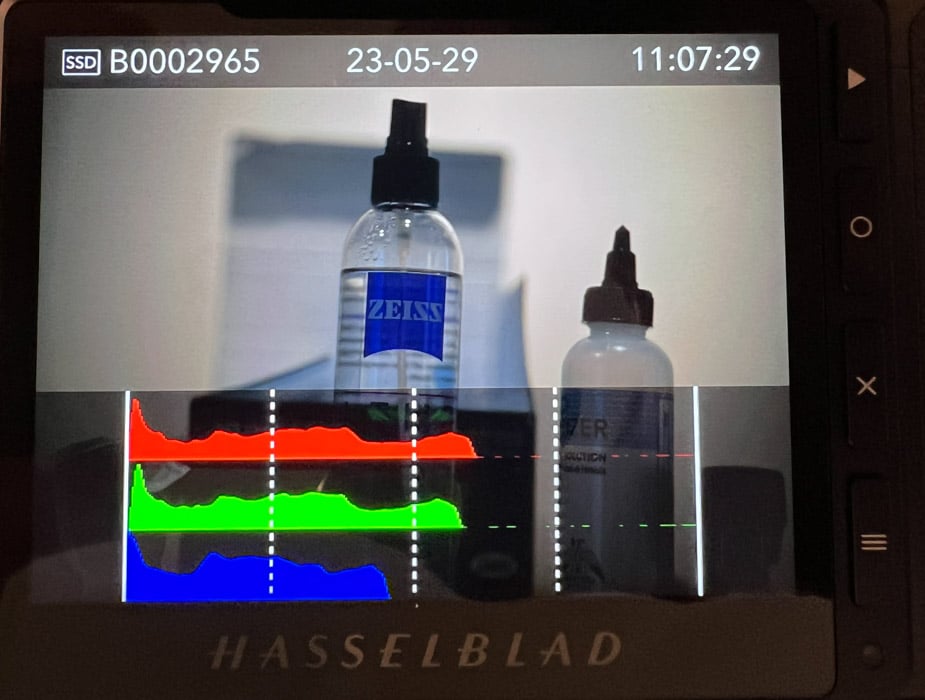
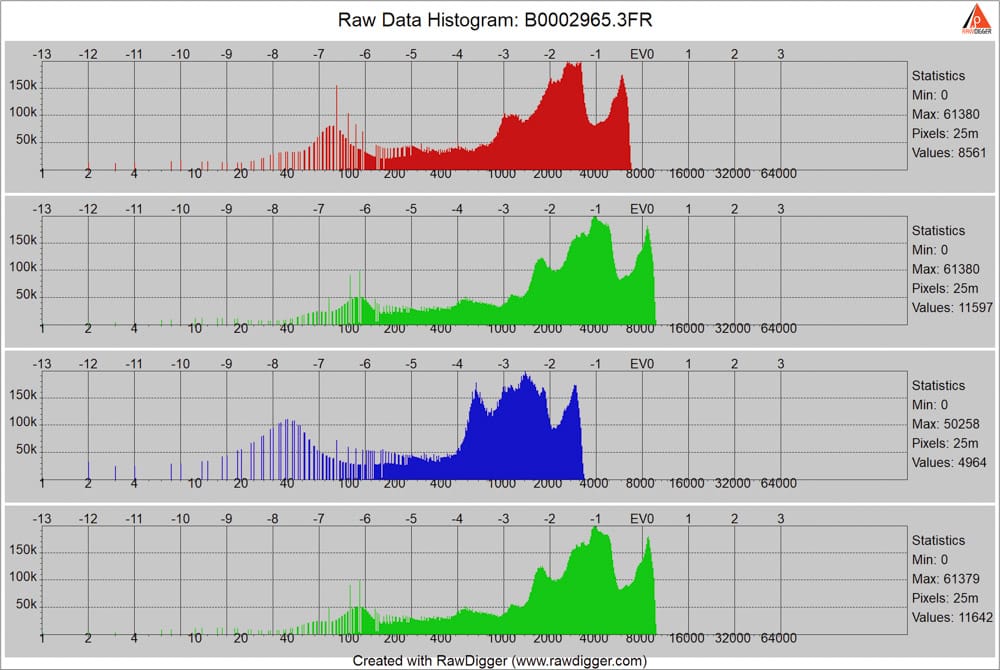
It’s clear that the red channel in the back-of-camera shot is too high.
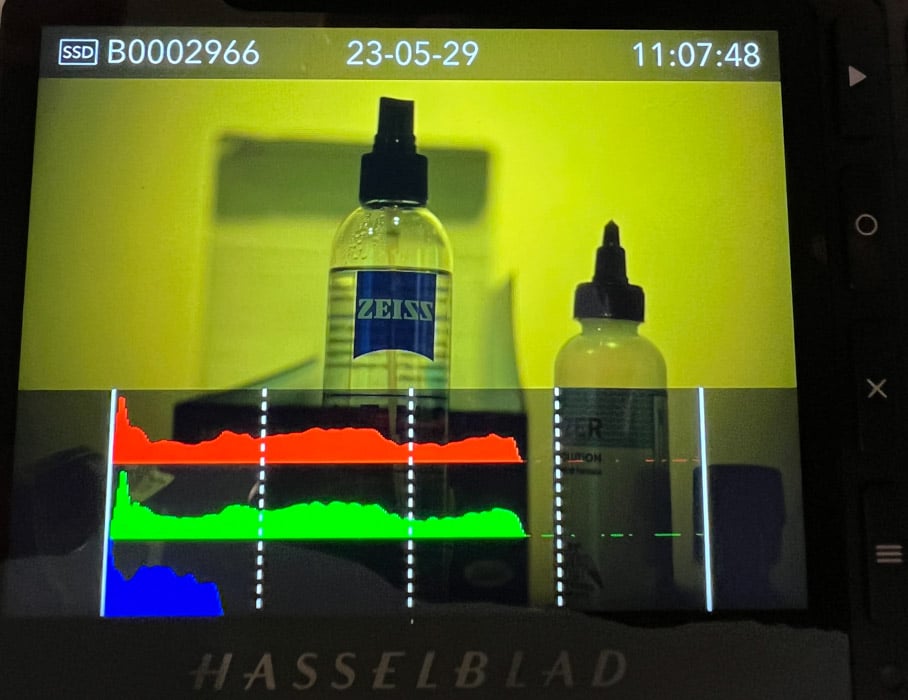
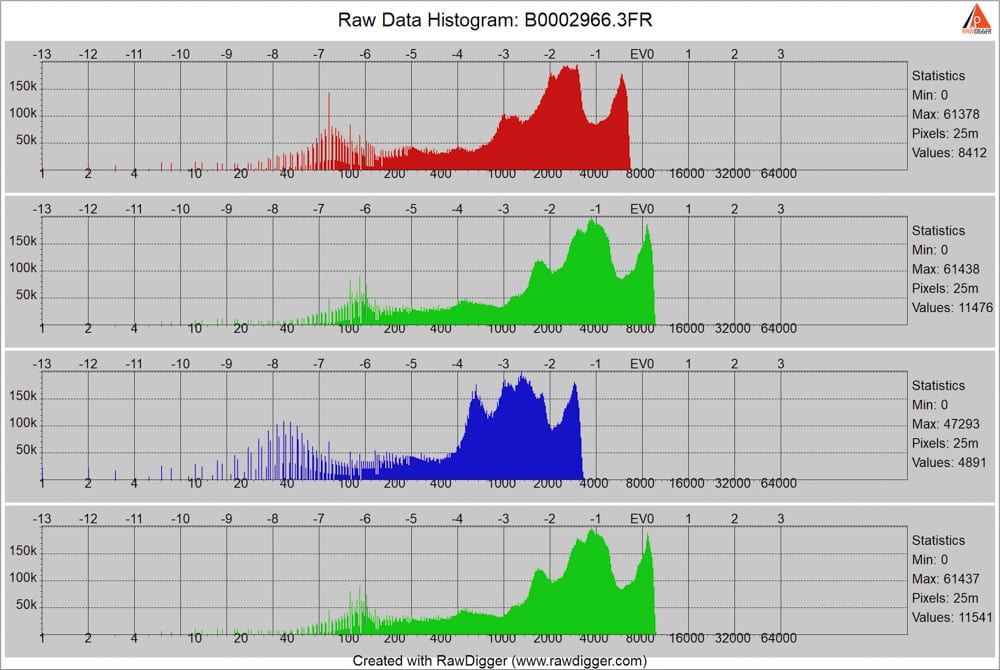
The red channel in the back-of-camera shot is still too high.
Lowering the color temperature to 2500 and leaving the tint all the way green (-100) gets the red and green channels to have about the right relationship:
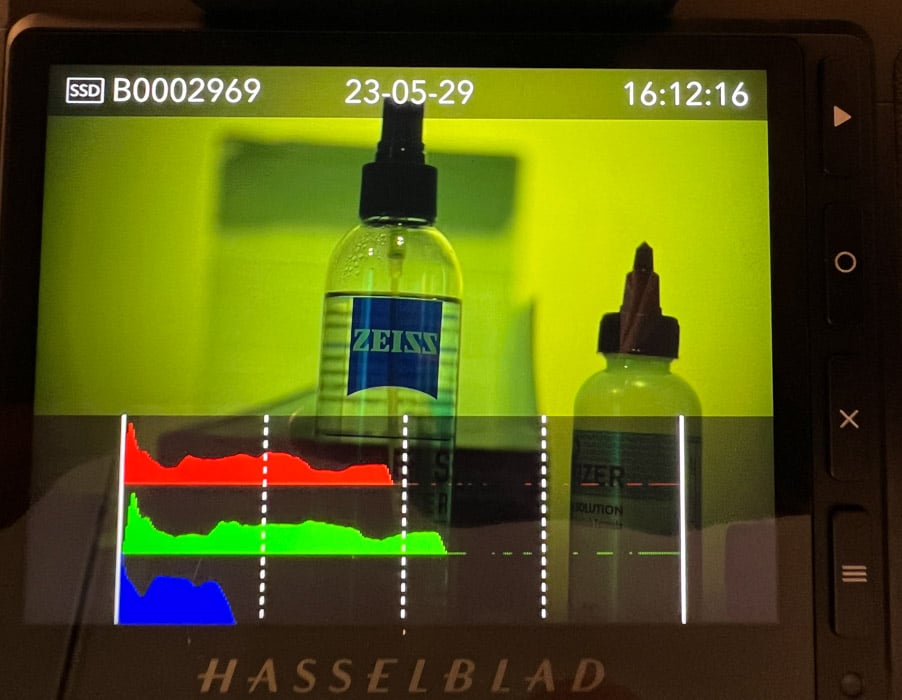
Unrelated to white balance, but what’s going on with the multiple levels in the blue histograms? It looks like there can be drawn 3 different curves through the blue levels. I ask because I see a similar pattern in histograms of my Fuji X100V, never seen this in histograms of my Sony A7, A7R2 or A7R4. Very curious.
By the way, all the best with coping with your unfortunate accident. Regards, Ad.
“…what’s going on with the multiple levels in the blue histograms? It looks like there can be drawn 3 different curves through the blue levels”
You mean the combing? I don’t know what causes that, but it’s not unusual.
And thanks for the kind thoughts.